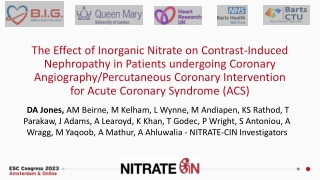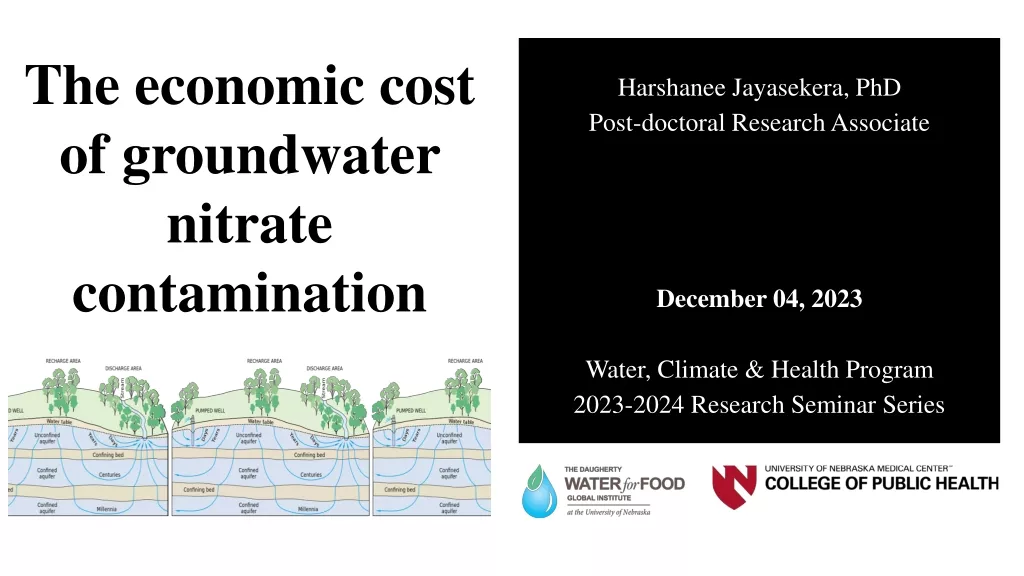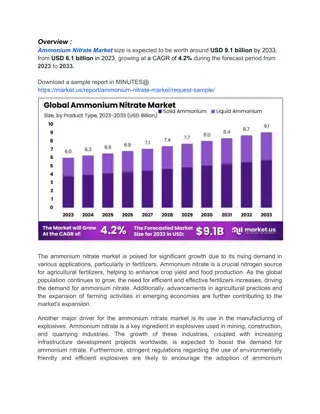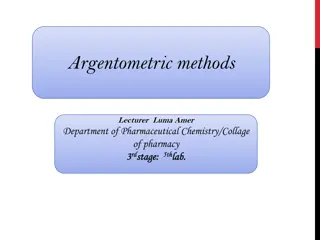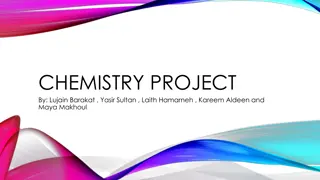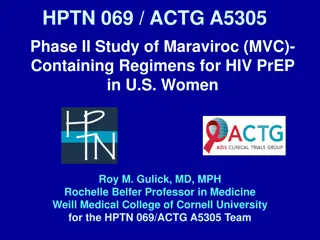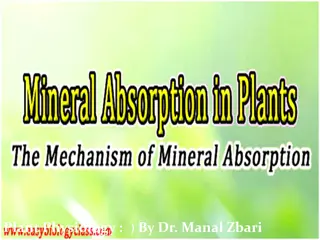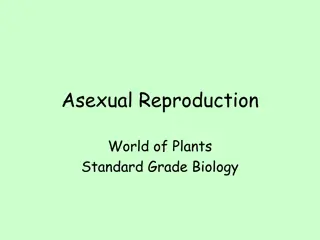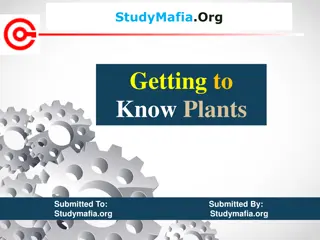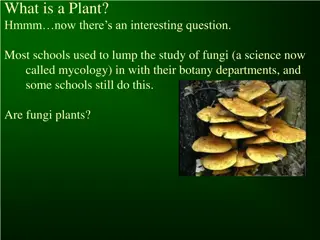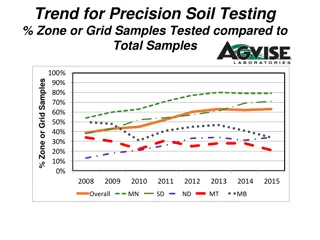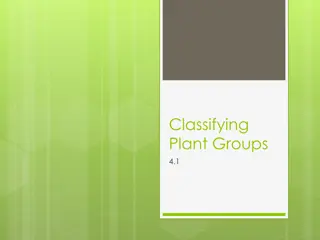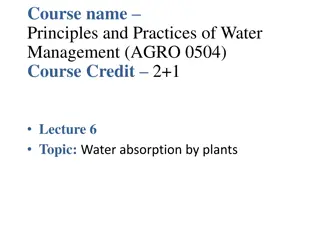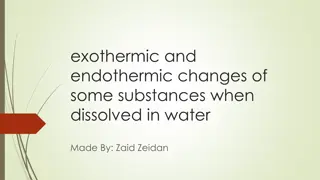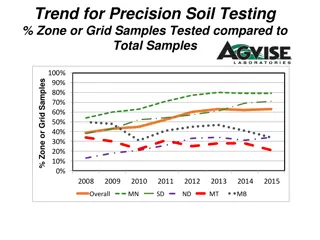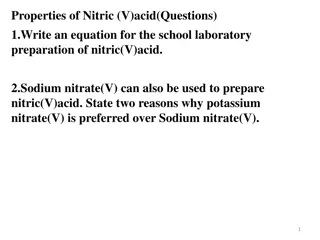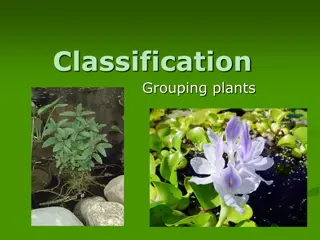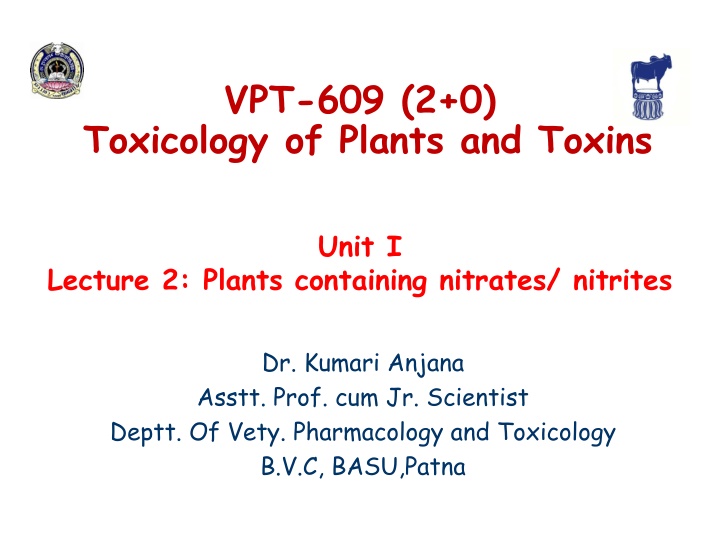
Plants High in Nitrates and Nitrites: Toxicology Insights
Explore the toxicity of plants containing nitrates and nitrites, including sources of ingestion, species variations in sensitivity, toxicokinetics, and mechanisms of toxicosis. Learn about the risks associated with consuming plants rich in nitrates and nitrites, the impact on different species, and the potential health effects of nitrite accumulation.
Uploaded on | 1 Views
Download Presentation

Please find below an Image/Link to download the presentation.
The content on the website is provided AS IS for your information and personal use only. It may not be sold, licensed, or shared on other websites without obtaining consent from the author. If you encounter any issues during the download, it is possible that the publisher has removed the file from their server.
You are allowed to download the files provided on this website for personal or commercial use, subject to the condition that they are used lawfully. All files are the property of their respective owners.
The content on the website is provided AS IS for your information and personal use only. It may not be sold, licensed, or shared on other websites without obtaining consent from the author.
E N D
Presentation Transcript
VPT-609 (2+0) Toxicology of Plants and Toxins Unit I Lecture 2: Plants containing nitrates/ nitrites Dr. Kumari Anjana Asstt. Prof. cum Jr. Scientist Deptt. Of Vety. Pharmacology and Toxicology B.V.C, BASU,Patna
Sources Ingestion of nitrate/nitrite through forage and plants. Improperly stored hay (damp) or silage: microbial reduction of nitrate to nitrite. Phenoxy acetic acid derivative herbicides: 2,4-D and 2,4,5-T increase nitrate content of grasses. Agricultural Source: Fertilizers: Runoff water from agricultural fields sprayed with nitrate fertilizers contaminating water in ponds. Accidental ingestion of nitrate fertilizers. Chronic drinking of well water in nitrate rich areas. Excess use of Na nitrite in HCN poisoning. Drinking nitrates/nitrites used in pickling and curing brines for preserving meats. refuge water from meat processing plants:
Sources : Nitrate rich plants Amaranthus, Astragalus, Brassica, Ipomoea, Sorghum, Chenopodium Spp, Beta vulgaris, Zeamays etc. barley, wheat, rye Sudan grasses, corn, beets, rape, docks, sweet clover nightshades.
Species Variation Ruminants are more sensitive than nonruminants: Ruminal microfloral reduction of nitrate to nitrite (intermediate of ammonia formation). Cattle are the most susceptible. Among nonruminants: Young pigs: reduction of nitrate to nitrite by intestinal microflora, but not in adults (age limited pathway). Simultaneous feeding on subabul increases nitrate toxicity: favours conversion of nitrate to nitrite. Pre-existing anaemia aggravates nitrate toxicity. Cereal based/concentrate diets reduce nitrate toxicity (carbohydrate rich diets).
Toxicokinetics Normally nitrates ingested in limited quantities are utilized for synthesis of proteins through reduction to nitrite and formation of ammonia with the help of ruminal microflora. Nitrate nitrite NH2OH Ammonia Rate limiting reaction Ruminal microfoloraRuminal microflora Protein synthesis If excess nitrates are ingested or the reduction of nitrate exceeds the ruminal microbial reduction of nitrite to ammonia, nitrites accumulate in rumen and absorbed resulting in toxicity.
Mechanisms of Toxicosis Mathaemoglobinaemia and Vascular Shock. Nitrite hypoxia/anoxia. Tissue death due to oxystarvation. combines with Haemoglobin: tissue Hypotension: Nitrite ions (NO-) formed from nitrate relax vascular smooth muscles: Dilatation of blood vessels: pooling of blood in large blood vessels: decreased venous return: reduced cardiac out put (Vascular shock).
Clinical Signs Acute: Signs appear if 20-40% haemoglobin is converted to methaemoglobin. The signs are respiratory distress (hypoxia/anoxia), gasping, rapid respiration and heart rates, rapid and weak pulse, terminal convulsions, coma and death.
Other signs: Salivation, diarrhoea, colic, muscular weakness, ataxia. Pregnant animals: abortion (due to decrease in progesterone concentration) and also the nitrites cross placenta and cause foetal death. Chronic: Hypothyroidism, Vitamin A deficiency, infertility, immunosuppression.
Necropsy: Chocolate or coffee colored blood. Generalized cyanosis. Diagnosis: Analysis of rumen contents for nitrate/nitrite: Blood (> 20 g/ml). If PM delayed specimens for toxic analysis: aqueous humour or CSF.
Treatment Specific Antidotal Therapy: Regeneration of haemoglobin from methaemoglobin: Reduction Methylene Blue Leuco Methylene Blue (reducing agent) Activation of Nitrite Diaphorase I and II + Haemoglobin (Fe++) Methaemoglonin (Fe+++) Haemoglobin (Fe++) Oxidation Reduction Leuco methylene blue activates Diaphorase I and II, which facilitate reduction of methaemoglobin to haemoglobin. Methylene blue as 1% sol by slow iv injection @ 8.8 mg/kg in ruminants or 4.4 mg/kg in nonruminants. Repeat after 16-30 min if clinical response is not satisfactory. Ascorbic acid as reducing agent 5 20 mg/kg iv.
Supportive treatment Blood transfusion. Shock therapy (adrenaline to increase BP). Broad spectrum antibiotics through large volumes of water into rumen to reduce ruminal microfloral reduction of nitrates to nitrites. Mineral oil (liquid paraffin) or saline purgatives to expel nitrates/nitrites from GIT.

